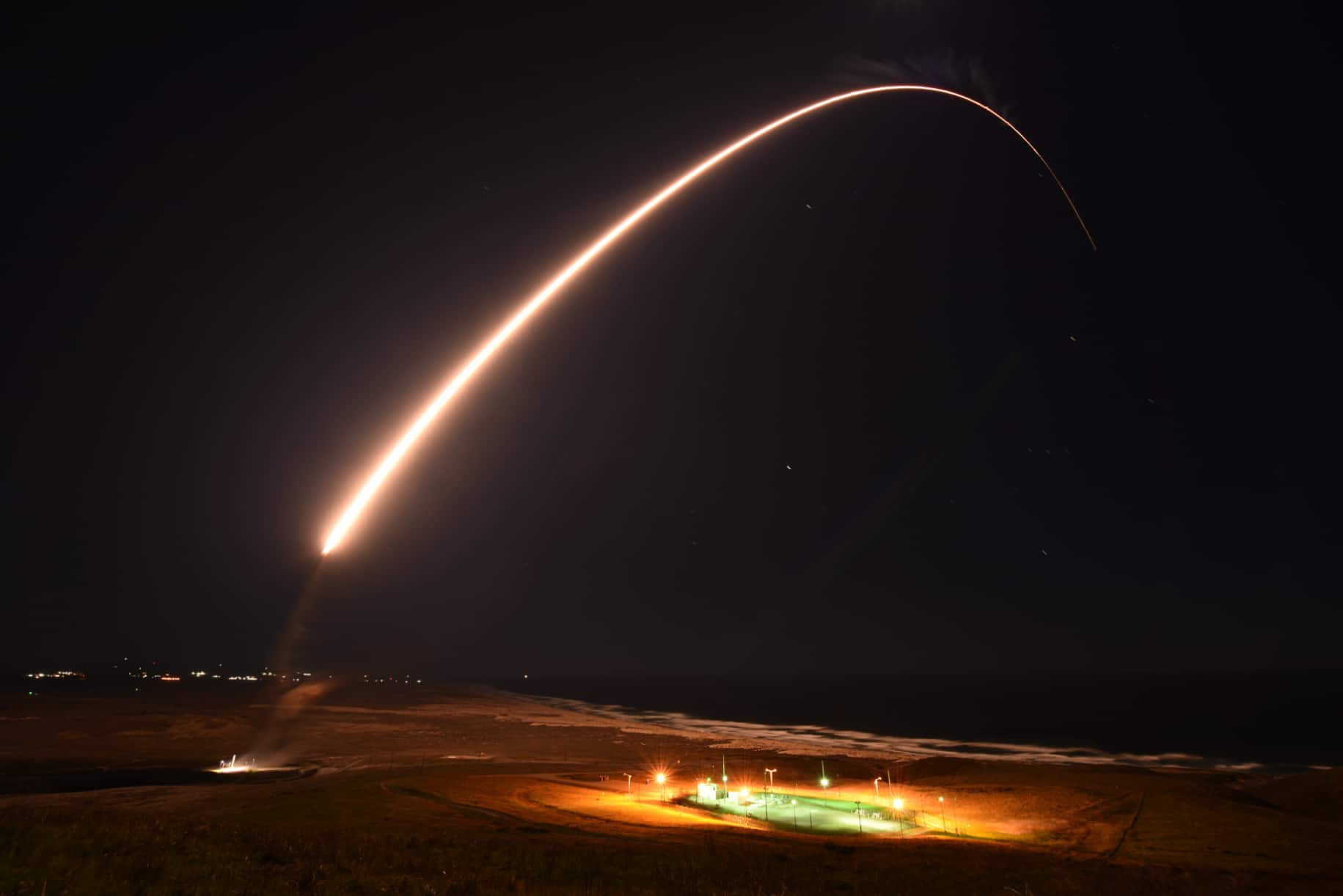The United States conducted a successful test-launch of an unarmed Minuteman III intercontinental ballistic missile (ICBM) from Vandenberg Space Force Base in California last Tuesday. This routine test, carried out by the U.S. Air Force Global Strike Command in coordination with the U.S. Navy, serves as a critical check on the Minuteman III’s capabilities.
In the launch, the Minuteman III demonstrated its ability to carry multiple reentry vehicles, traveling over 4,200 miles to reach the Reagan Test Site at Kwajalein Atoll in the Marshall Islands. The missile, a cornerstone of the U.S. nuclear triad, is usually equipped with a single nuclear-armed reentry vehicle. However, the recent test featured three reentry vehicles, consisting of a high-fidelity Joint Test Assembly and two telemetry objects, all equipped with sensors to capture detailed flight data.
Overnight, at roughly 11:00PM Pacific Time, the U.S. Air Force in Coordination with the U.S. Navy carried out a Successful Launch of an Unarmed “Minuteman lll” Intercontinental Ballistic Missile equipped with a Multiple, Independently, Targetable Re-entry Vehicle (MIRV) from… pic.twitter.com/3WGgWCqRVk
— OSINTdefender (@sentdefender) November 6, 2024
According to Col. Dustin Harmon, commander of the 377th Test and Evaluation Group, these reentry vehicles act as “mock warheads,” gathering extensive data on the missile’s performance and accuracy. Such tests aim to replicate real-world conditions, assessing the missile’s capability to deliver multiple payloads if necessary.
The launch was executed using the Airborne Launch Control System, which allows for missile launches from a U.S. Navy E-6B Mercury aircraft rather than a ground-based command post. This airborne launch capability ensures that the U.S. can deploy its nuclear arsenal even if ground-based command centers are compromised, providing a crucial layer of operational security and redundancy.
Gen. Thomas Bussiere, commander of Air Force Global Strike Command, emphasized the importance of these tests for national defense, stating they confirm the Minuteman III’s readiness and validate the ability of U.S. forces to launch an ICBM if authorized by the president.
Data gathered from the test, including metrics from radar, optical sensors, and telemetry equipment, will be analyzed over the coming months. Findings will be reported to U.S. Strategic Command and ultimately to the White House, contributing to assessments of the missile’s accuracy and operational readiness.
Deployed in 1970, the Minuteman III remains the U.S.’s only ground-based ICBM in active service. While efforts are underway to replace it with the LGM-35A Sentinel, expected to be operational by 2029, the Minuteman III will continue as a mainstay of U.S. deterrence strategy.
Expanded Coverage:






